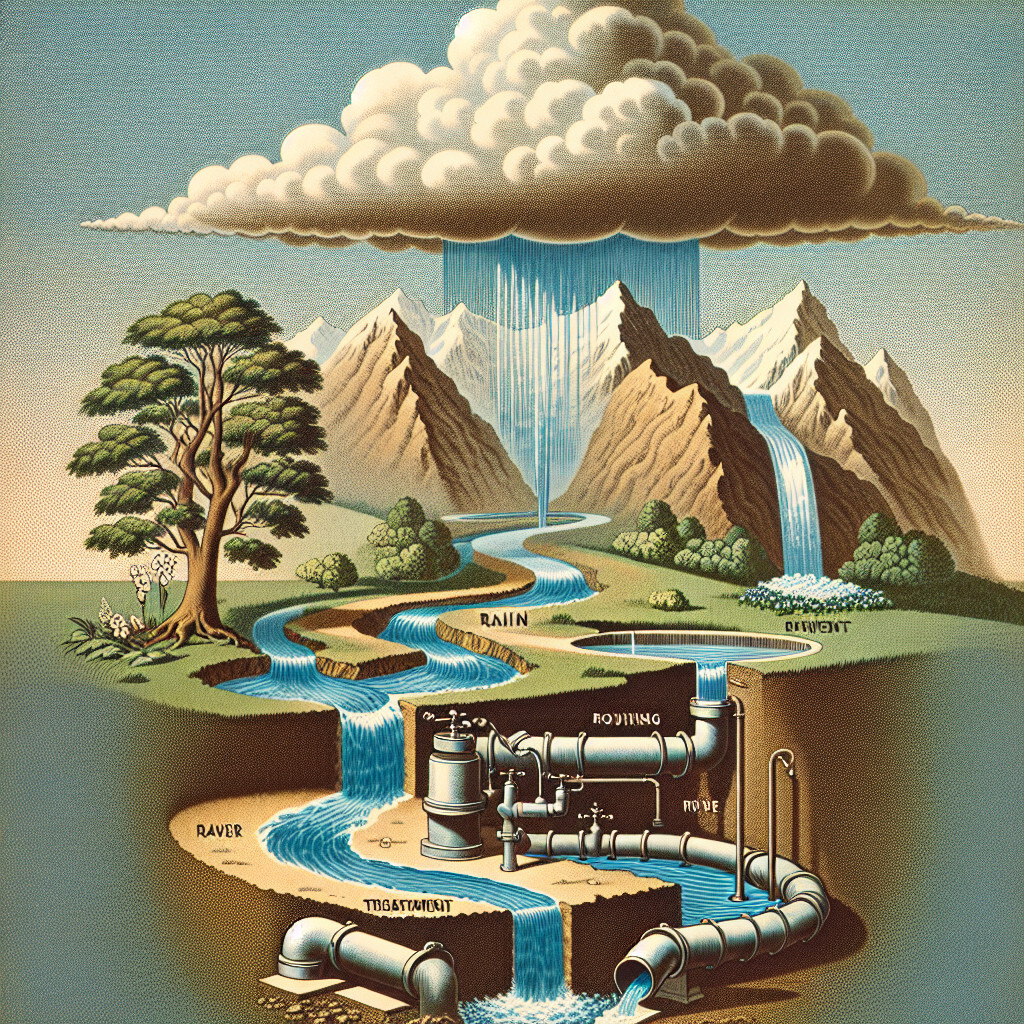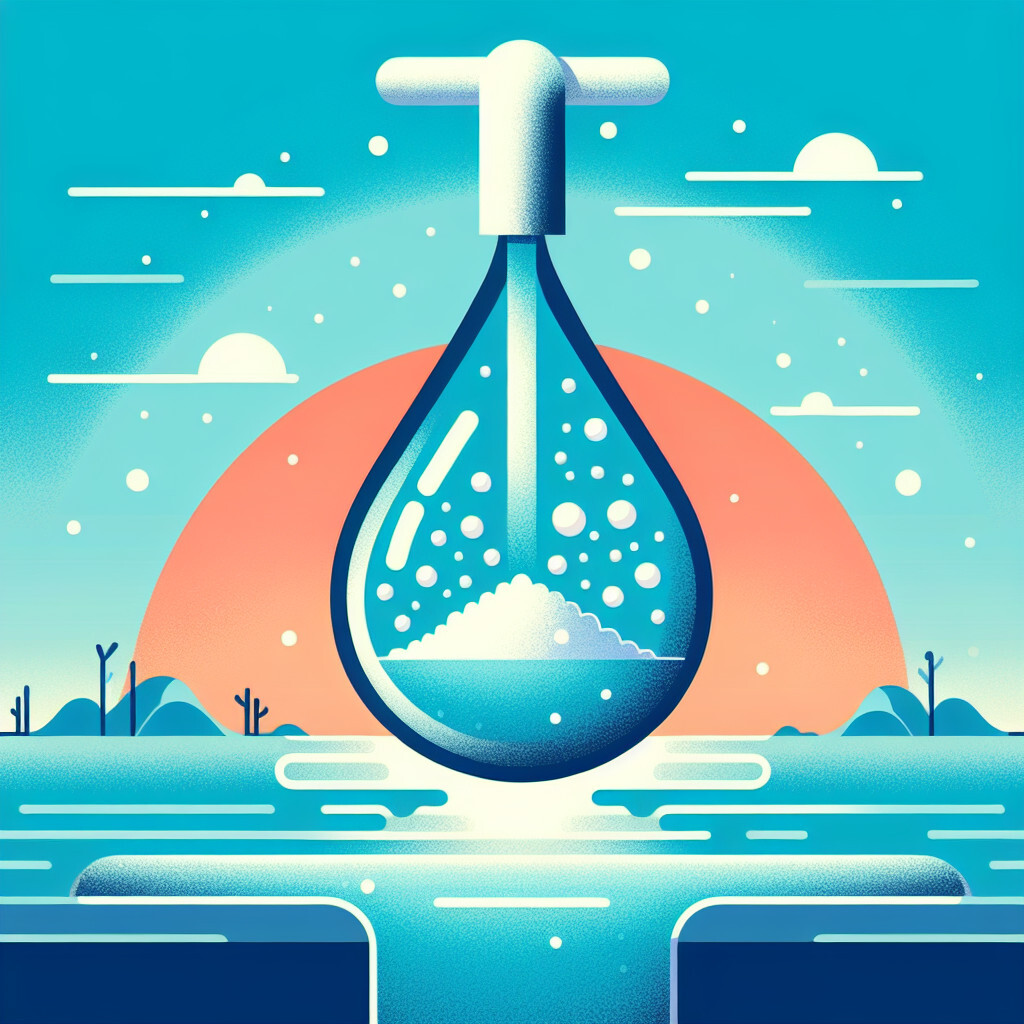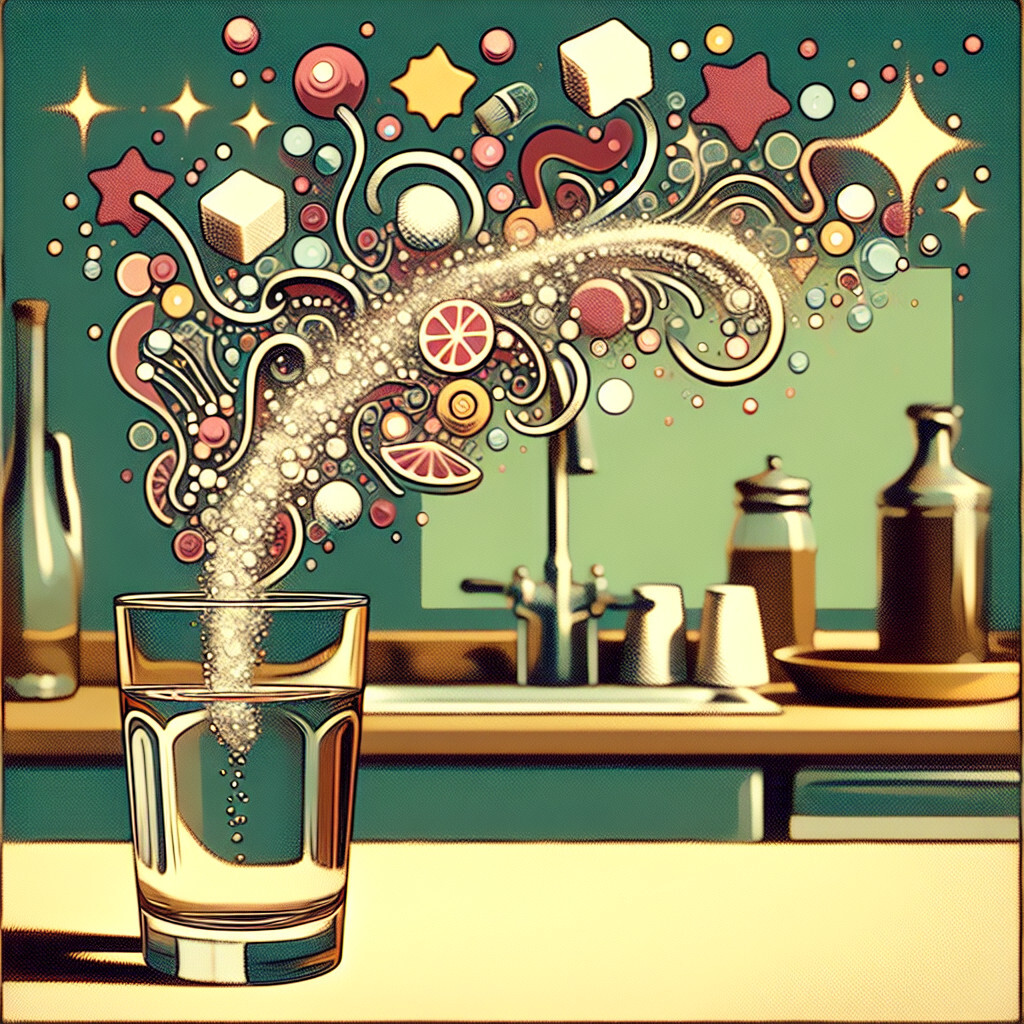-
Table of Contents
“Tap Water: Journeying from Nature’s Heart to Your Home!”
Introduction

Tap water originates from various sources such as rivers, lakes, reservoirs, and underground aquifers. It is collected and then treated at water treatment facilities to remove impurities and harmful substances. The treated water is then distributed to households and other establishments through a complex network of pipes. The quality and safety of tap water can vary depending on the source and the effectiveness of the treatment process.
Understanding the Journey of Tap Water: From Source to Sink
Understanding the journey of tap water from its source to our sinks is a fascinating exploration of a complex process that we often take for granted. This process involves multiple stages, each of which plays a crucial role in ensuring that the water we use daily is safe and clean.
The journey of tap water begins at the source, which can be either surface water or groundwater. Surface water includes rivers, lakes, and reservoirs, while groundwater is found beneath the earth’s surface in aquifers, which are porous rocks that can hold and transmit water. The choice of source depends on geographical location and availability. For instance, a city located near a large river may primarily use surface water, while a rural area might rely on groundwater.
Once the water is sourced, it is transported to a treatment plant. This transportation often involves a network of pipes, pumps, and sometimes even tunnels. At the treatment plant, the water undergoes a series of processes to remove impurities and make it safe for consumption. These processes include coagulation and flocculation, where chemicals are added to the water to bind with dirt and other particles, forming larger particles called floc. The floc is then removed through a process called sedimentation.
Following sedimentation, the water is filtered to remove any remaining particles. Different types of filters can be used, including sand, gravel, and charcoal. After filtration, the water is disinfected, usually with chlorine, to kill any remaining bacteria or viruses. In some cases, additional treatments may be applied, such as fluoridation to prevent tooth decay or pH adjustment to prevent pipe corrosion.
Once the water has been treated, it is stored in a clean, safe environment until it is needed. This could be a water tower or a reservoir. From there, the water is distributed to homes and businesses through a vast network of pipes. This distribution system is carefully monitored and maintained to ensure that the water remains clean and safe as it travels to its final destination.
Upon reaching our homes, the water is ready for use. We turn on the tap, and out flows clean, safe water for drinking, cooking, bathing, and other uses. However, the journey of tap water does not end here. After we use the water, it goes down the drain and enters the wastewater system. This water is then treated and returned to the environment, ready to begin the journey all over again.
Understanding the journey of tap water from source to sink helps us appreciate the complex systems and processes that ensure we have access to clean, safe water every day. It also underscores the importance of protecting our water sources and using water wisely. After all, water is a finite resource, and its journey is a cycle that we all depend on for our health and well-being.
The Role of Water Treatment Plants in Providing Tap Water
Tap water, a vital resource that we often take for granted, is readily available at the turn of a faucet in most developed countries. However, the journey of water from its source to our taps is a complex process that involves a series of intricate steps. Central to this process are water treatment plants, which play a pivotal role in ensuring that the water we consume is safe and clean.
Water treatment plants are sophisticated facilities designed to purify water from various sources such as rivers, lakes, and underground wells. The primary function of these plants is to remove harmful substances and pathogens that can cause diseases, making the water safe for human consumption. The process begins with the collection of raw, untreated water, which is then subjected to a series of treatment stages before it is deemed fit for consumption.
The first stage in the water treatment process is coagulation and flocculation. During this phase, liquid aluminum sulfate or alum and polymer are added to the untreated water. These substances cause tiny particles of dirt and debris to adhere to each other, forming larger, heavier particles called flocs. Subsequently, these flocs are removed from the water through a process known as sedimentation.
Following sedimentation, the water undergoes filtration, which is the second stage of the treatment process. Here, the water is passed through filters made up of sand, gravel, and charcoal to remove even smaller particles. This stage is crucial in eliminating bacteria, viruses, and chemicals that may have survived the previous treatment steps.
The final stage in the water treatment process is disinfection. During this phase, disinfectants such as chlorine or chloramine are added to the water to kill any remaining bacteria or viruses. This step is vital in ensuring that the water remains safe to drink as it travels through miles of pipes to reach our homes.
Once the water has been treated, it is stored in a closed tank or reservoir, where it remains until it is needed. From the storage facility, the water is then pumped into a distribution system that carries it to homes and businesses. This system is a network of pipes, pumps, and valves that ensure a constant supply of water to consumers.
It is important to note that the quality of tap water can vary depending on the source and the treatment process. Therefore, water treatment plants regularly test the water for a range of contaminants to ensure it meets the safety standards set by health authorities. These tests are conducted at various stages of the treatment process and even after the water has been distributed to consumers.
In conclusion, water treatment plants play a critical role in providing safe and clean tap water. They employ a series of complex processes to remove harmful substances and pathogens from the water, ensuring it is safe for human consumption. Without these facilities, the availability of clean, safe drinking water would be a significant challenge, underscoring their importance in our daily lives.
Exploring the Natural Sources of Our Everyday Tap Water
Water is an essential element of life, and tap water is a primary source of it for many people around the world. However, few of us stop to consider where this vital resource originates. The journey of water from its natural source to our taps is a fascinating one, involving a complex process of collection, treatment, and distribution.
The primary sources of tap water are surface water and groundwater. Surface water includes rivers, lakes, and reservoirs, while groundwater is found beneath the earth’s surface in aquifers, which are porous rocks that can hold and transmit water. The choice between these sources depends on their availability and quality in a particular region.
Rivers are a significant source of tap water, especially for large cities. For instance, New York City relies on the Hudson River and its tributaries for its water supply. The water is collected in reservoirs and then treated before it is distributed to the city’s residents. Lakes also serve as a source of tap water. The Great Lakes, for instance, provide drinking water to more than 40 million people in the United States and Canada.
Groundwater, on the other hand, is the primary source of tap water for many rural areas and small towns. Wells are drilled into the ground to reach the aquifers, and the water is then pumped to the surface. Groundwater is often cleaner than surface water as the soil acts as a natural filter, removing many contaminants. However, it can still contain harmful substances like radon or arsenic and therefore must be treated before it is safe to drink.
Once the water is collected from these natural sources, it undergoes a rigorous treatment process to make it safe for consumption. This process typically involves filtration to remove particles and disinfection to kill any harmful bacteria or viruses. In some cases, additional treatments may be necessary to remove specific contaminants, such as lead or pesticides.
After treatment, the water is stored in clean, safe reservoirs or water towers until it is needed. It is then distributed through a vast network of pipes that carry it to our homes, schools, and businesses. This distribution system is a marvel of engineering, ensuring that clean, safe water is always available at the turn of a tap.
However, the journey of water from its source to our taps is not without challenges. Pollution, overuse, and climate change are all threats to our water supply. Rivers and lakes can be contaminated by industrial waste, agricultural runoff, and other pollutants. Aquifers can be depleted by over-pumping, and their water quality can be degraded by land use changes and pollution. Climate change can alter precipitation patterns, leading to water shortages in some areas and floods in others.
In conclusion, the tap water that we take for granted every day has a long and complex journey from its natural sources. It is a precious resource that we must protect and conserve for future generations. Understanding where our tap water comes from and the challenges it faces is the first step towards this goal.
The Process of Converting Groundwater into Tap Water
Water is a fundamental necessity for life, and tap water is one of the most common sources of this vital resource. The journey of water from the ground to our taps is a fascinating process that involves a series of complex steps. This article will delve into the process of converting groundwater into tap water, providing a comprehensive understanding of where our tap water comes from.
Groundwater is the primary source of tap water. It is found beneath the earth’s surface, stored in porous rocks known as aquifers. These aquifers act as natural reservoirs, holding water that has seeped down through the soil and rock from rain and snowmelt. The process of converting this groundwater into tap water begins with extraction. Wells are drilled deep into these aquifers, and pumps are used to bring the water to the surface.
Once the water is extracted, it is transported to a treatment facility. This is where the water undergoes a series of treatments to remove any impurities and make it safe for consumption. The first step in this process is screening, where large debris like leaves, twigs, and other particulates are removed. This is followed by a process called coagulation, where chemicals are added to the water to make tiny particles stick together and form larger particles that can be easily removed.
After coagulation, the water is subjected to a process called sedimentation. Here, the water is allowed to sit undisturbed while the heavier particles sink to the bottom due to gravity. These particles, known as sludge, are then removed. The water then goes through filtration, where it is passed through layers of sand, gravel, and charcoal to remove any remaining particles.
The final step in the treatment process is disinfection. This is where harmful bacteria and other microorganisms are killed to ensure the water is safe to drink. This is typically done by adding chlorine or other disinfectants to the water. Once the water has been thoroughly treated, it is stored in clean, safe reservoirs until it is needed.
From the reservoirs, the water is then distributed to homes and businesses through a network of pipes. These pipes are often buried underground to protect them from damage and contamination. The water pressure in these pipes is carefully regulated to ensure that the water flows smoothly from the taps whenever they are turned on.
It’s important to note that the quality of tap water can vary depending on the source of the groundwater and the treatment process. In some areas, additional steps may be taken to remove specific contaminants or to improve the taste of the water. For example, in areas where the groundwater has a high mineral content, a process called softening may be used to remove excess minerals.
In conclusion, the process of converting groundwater into tap water is a complex one that involves extraction, treatment, storage, and distribution. It ensures that the water we drink is safe and clean. Understanding this process can help us appreciate the value of this vital resource and the importance of conserving it.
Q&A
1. Question: Where does tap water come from?
Answer: Tap water typically comes from two main sources: surface water, such as rivers, lakes, and reservoirs, or groundwater from underground aquifers.
2. Question: How is tap water treated before it reaches our homes?
Answer: Tap water is treated at a water treatment plant where it undergoes several processes including filtration, coagulation, sedimentation, and disinfection to remove harmful contaminants and make it safe for consumption.
3. Question: Can tap water come from rainwater?
Answer: Yes, tap water can come from rainwater. Rainwater is collected, stored in reservoirs, and then treated at water treatment plants before it is distributed as tap water.
4. Question: Is tap water always safe to drink?
Answer: While tap water is generally safe to drink in many developed countries due to strict regulations and treatment processes, the quality can vary depending on the source and location. In some areas, additional home filtration may be necessary.
Conclusion
Tap water comes from either surface water sources like rivers, lakes, and reservoirs, or from underground sources like aquifers. It is then treated and purified at water treatment facilities to remove contaminants and harmful substances before being distributed to homes and businesses through a network of pipes.






